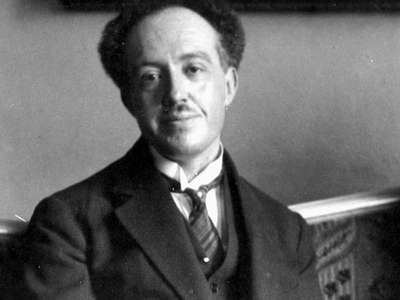Prince Louis-Victor Pierre Raymond de Broglie, better known as Louis de Broglie, presented, in 1924, his doctoral thesis "Research on quantum theory", in which he asserted the wave-particle duality of electrons, laying the foundations of the wave mechanics. Likewise, he published important theoretical findings on the wave-particle nature of matter on an atomic scale.
Later, in 1927, de Broglie's statements were experimentally proven by scientists Clinton Davisson and Lester Germer.
The de Broglie wave theory of electrons is based on Einstein's proposal on the wave properties of light at short wavelengths. De Broglie announced the possibility that matter behaved similarly to light, and suggested similar properties in subatomic particles such as electrons.
De Broglie explained the movement of electrons around the atomic nucleus taking into account that electric charges and orbits restrict the amplitude, length and frequency of the wave described by the electrons.
Broglie's wave theory of electrons justified the success of Bohr's atomic model in explaining the behavior of the single electron of the hydrogen atom.
Similarly, it also shed light on why this model did not fit more complex systems, ie, atoms with more than one electron.
Davisson and Germer Experiment
Leading American physicists Clinton J. Davisson and Lester Germer experimentally confirmed de Broglie's theory of wave mechanics in 1927.
They carried out dispersion tests of an electron beam through a nickel crystal and observed the diffraction phenomenon through the metallic medium. For it:
- They placed an electron beam setup that had a known initial energy.
- They installed a voltage source to speed up the movement of electrons by inciting a potential difference.
- They directed the flow of the electron beam towards a metallic crystal; in this case, nickel.
- They measured the number of electrons that hit the nickel crystal.
At the end of the experiment, Davisson and Germer found that the electrons were scattered in different directions.
By repeating the experiment using metallic crystals with different orientations, the scientists observed the following:
The scattering of the electron beam through the metallic glass was comparable to the phenomenon of interference and diffraction of light rays.
The reflection of the electrons on the impact crystal described the trajectory that, theoretically, it should describe according to de Broglie's theory of electron waves.
In short, the Davisson and Germer experiment experimentally verified the wave-particle dual nature of electrons.
Limitations
- The de Broglie model of the atom does not predict the exact location of the electron on the orbit in which it travels.
- In this model, electrons are perceived as waves that move throughout the orbit without a specific location, thus introducing the concept of electronic orbital.
- Furthermore, the de Broglie atomic model, analogous to the Schrödinger model, does not consider the rotation of electrons on their own axis (spin).
- By ignoring the intrinsic angular momentum of the electrons, the spatial variations of these subatomic particles are being neglected.
- In the same order of ideas, this model also does not take into account changes in the behavior of fast electrons as a consequence of relativistic effects.



